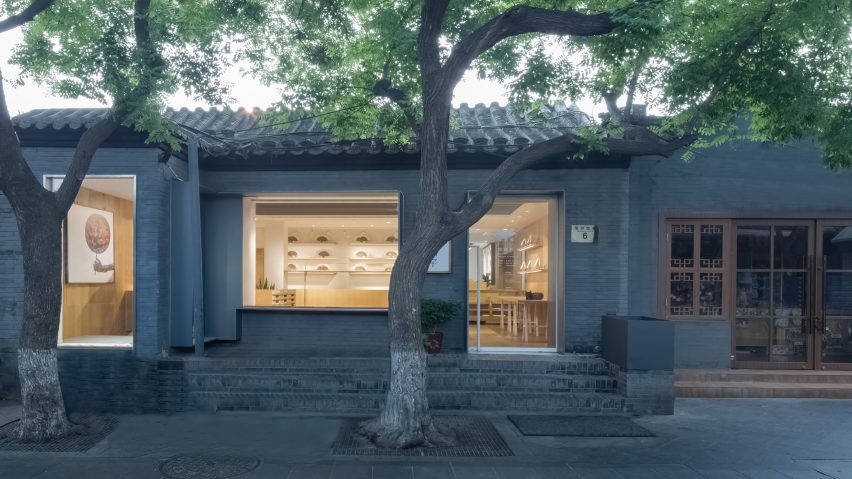A former house in Beijing's old town is transformed into a specialist fan shop with a minimalist oak-lined interior, in this project by Golucci Interior Architects.
Located at the end of a hutong – the tightly packed courtyard neighbourhoods that are typical in Beijing – the Jing Fan shop sits behind two mature locust trees.
Raised slightly from the street by three steps, the 150-square-metre store is fronted by a narrow terrace.
Two large windows and a glass door on the building's grey stone facade provide passersby with a clear view of the store's warm oak interior and its minimalist display of fans.
"The design is simple and clean," Golucci Interior Architects' director Lee Hsuheng told Dezeen.
"It is an old house in Beijing's old town that has been put into a brand new contemporary wooden box. A fan shop that tries to let more young people like the old things which is their own culture."
As visitors walk into the store they enter the showroom where the fans are displayed across wall-mounted oak shelves. Sets of oak drawers with glass display tops made specifically for storing and displaying fans populate the space.
Here, customers can browse a wide variety of designs with different shaped heads and spines and handles made from various different species of bamboo.
The store's interior wraps around a central courtyard with a magnolia tree. This serene glass-wrapped space filters light into the back of the store and provides a pleasant focal point.
The oak cashier desk is positioned in the narrow space opposite the courtyard where customers make their way from the front of the shop to the space at back.
"Customers slow down when they pass here," said the designers.
The rear of the store houses a workshop where there is a long table where customers are invited to drink tea and have conversations.
The architects said that they used their experience of designing restaurants to inform the design of the store.
"When people go through the South Luogu Lane, we try to create a leisurely and relaxed space for customers – the feeling like a person of refined tastes with a fan, a courtyard, a magnolia tree and a silent black cat called Gege; enjoy this wonderful and cosy place."
Golucci Interior Architects is among a number of studios that has recently explored ways of repurposing Beijing's hutong buildings.
Other recent examples include Space Modification Unit, which transformed a property into tranquil tea house, and Studio Ramoprimo, which created a hutong wine bar.
Photography is by Lulu Xi.
Project credits:
Designer: Golucci Interior Architects
Design team: Lee Hsuheng, Zhao Shuang, Nan Cheng, Xu Jiaojiao

